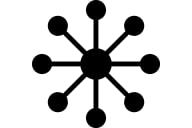You have /5 articles left.
Sign up for a free account or log in.
Around this time last year, I noted with interest -- via that late-night bastion of (t)reason, "The Colbert Report" -- that the color-coded terror index, which has been an ongoing but perhaps absurd part of our recent lives, was being retired.
That index, which charts the level of terror threat, painted a fairly redundant rainbow of fear from green (mild -- having a cup of tea with radical groups who have given up all thoughts of violent protest) to red (extreme -- hunkered down hoping to be somewhere just outside the blast radius, gripping a bootleg Kalashnikov in case Al Qaeda knocks on the door).
The index had a largely hostile audience among many commentators and the American public, because it seemed to do little other than engender, if I might borrow some words from WB Yeats, a “terrified, vague” panic. It wasn’t particularly informative or functional. To select Green would have been an act of folly, a kind of professional or political hubris no career could possible survive if anything went wrong. Red, on the other hand, was little more than an admission of blind, hand-wringing panic. That left an elevated, cautious alert, the familiar yellows and oranges of our recent years, as the wise and inevitable response to a pervasive and undisclosed terror threat. And who needs a color chart to encourage that?
I grew up in Britain during the Irish Republican Army terror campaigns of the '70s and '80s, and I was only really made aware of my innate wariness when I moved to the United States in the '90s, and discovered a society largely unaware of the implications of terror in the domestic space.
But that has now largely changed by virtue of experience. The American public is largely schooled now in the anxieties of terror, by spectacular instances of it, whether home-grown in Oklahoma City, or international in New York or via the ever hungry cable news cycle.
And, unfortunately, because of those experiences, it has been forced into becoming an old hand at watchfulness. So, the terror alert, practically redundant, seemed largely an object lesson in the mass-marketing of anxiety: ultimately inducing elevated panic, some have posited, as a form of control.
Stephen Colbert’s thought-provoking suggestion noting the paralyzing effect of fear-mongering was that the retiring color code be updated and changed simply to "Quiet," or "Too Quiet."
But while those terror charts are now a thing of the past, a relic of older ways of thinking, destined to gather dust covertly in some office space, now otherwise empty because of austerity measures, or perhaps to swim peacefully in the quiet back waters of a frustrated think tank, I think there is a way for us to recycle, reuse and restore them — in higher education, and particularly in the liberal arts.
I think there is a place for them in the halls of academe, where we can mount the charts prominently close to office and teaching spaces. Of course, they should be edited for context. While academe has often played out as a context for personal or political terror, it seems more appropriate if the new fear index should be financial (and, paradoxically, thereby intellectual).
Green could read "low or no risk of financial exigency," though of course those days, if they ever existed, are long gone. I read about them, as a doctoral student in England, in David Lodge novels about the academic Promised Land in America, as one might read of the unicorn. Blue, a relaxed but guarded watchfulness, would mean that the conference expenses are still covered, but we might, collegially, forego dessert on the expense report. Elevated yellow tells us that it's time for faculty to tighten their belts, and forget about cost-of-living raises, or bold capital investment. Orange, that dreaded state of high financial exigency, might indicate furloughs, lost tenure lines, or even disappearing programs. Of course anything is possible, plausible or permissible when it hits “severe” red.
I can imagine that there are institutions and administrations all over which would gladly jump at the opportunity to place these prominently on display because of the chilling effect of fear, and the “terrified, vague” paralysis in which it often results. It would be a strong, visceral reminder that faculty should be quiet and grateful that we have our jobs. It would keep us meek while critical inroads are being made into faculty governance, academic standards, tenure, and full-time instruction.
It would stymie protest while traditional and essential parts of the academy like philosophy, history, literature and languages revert to a service function for a notional "liberal arts" core while students otherwise pursue their vocational certification in nursing, or air conditioning repair, or increasingly popular faddish pseudo-subjects like leadership.
As an industry we would put up with the growth of adjunct instruction, the increase in class sizes, the loss of civility in discourse, even the loss of discourse itself, along, of course, with the loss of instruction and instructors, to inanities like third-party computer software — as though something that belongs in the university were little more than checking off the boxes in a defensive driving class. Why, with one of those charts on the wall, we could replace entire language departments with Rosetta Stone, and entire English departments with carefully selected PBS programming. Why, even biology departments could be lost to interactive screenings of "Shark Week," and no one would be willing to say a word. Such is the effect of terror.
I don't mean to downplay the realities of the need for austerity as a response to real financial urgency. Just like the terrorist threat, it's out there, but it’s often not everywhere it seems to be. No doubt all of it would be easier to bear, however, if we had those advisory charts on our walls — even the steady gains of both administrative salaries, and administrative support staff, even in the midst of a profound state of financial exigency. After all, we want the very best to lead us out of this kind of financial crisis. And we all know, except in cases of faculty, of instruction, of academics, and, of course, of education in general, if you want the very best then it’s going to cost you.








